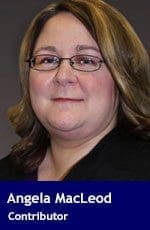 With another school year ending, it’s a good time to reflect on kindergarten-to-Grade-12 education in Ontario. As the second largest area of provincial expenditure, it can’t escape review as incoming premier Doug Ford’s new government plans to rein in spending.
With another school year ending, it’s a good time to reflect on kindergarten-to-Grade-12 education in Ontario. As the second largest area of provincial expenditure, it can’t escape review as incoming premier Doug Ford’s new government plans to rein in spending.
Fortunately one only needs to look to British Columbia for an example of how independent schools can provide choices for families and better outcomes for students – all at a lower cost to taxpayers.
Unlike most provinces in Canada, Ontario delivers most of its school choice through the public system. Ontario fully funds (no additional cost to parents) Catholic and French education alternatives in the public school system, in addition to standard public schools.
In contrast, B.C. doesn’t provide any religious and very little specialized education in the public system. Independent schools almost entirely deliver such education options in B.C. Unlike Ontario (and the Atlantic provinces), which don’t provide any assistance to parents choosing independent schools, B.C. pays up to 50 percent of the comparable cost of independent schooling. That’s one reason that B.C.’s enrolment in independent schools is more than double the rate of Ontario – 12.9 percent versus 6.1 percent of total enrolment.
In addition to providing choices for families, B.C.’s independent schools also deliver superior education outcomes for students. A recent study examined academic performance as measured by standardized tests in B.C. and found that students at non-elite independent schools outperformed their public school counterparts in 10 out of the 11 tests included in the analysis. Students at non-elite independent schools outperformed similar students at public schools in all six Foundation Skills Assessment (FSA) tests in elementary school and all five provincial exams in secondary school, though the difference for English 12 was not statistically significant.
This is an important finding because non-elite independent schools serve students with the same socio-economic characteristics as public schools. A recent analysis of B.C. families found that the after-tax income of families who choose non-elite independent schools, which represent more than 90 percent of all independent schools in the province, were essentially the same as those with children attending public schools.
Independent schools in B.C. provide parents with greater choice and diversity in education, and better academic performance for students in independent schools.
What’s more, spending on public schools is significantly lower in B.C. than in Ontario – in 2014-15 (the latest year of comparable data), B.C. spent $11,216 per public school student compared to $13,276 in Ontario, an 18.4 percent difference. Even more significantly, according to a 2014 study, if Ontario adopted the B.C. model of education, it would save between $849.1 million and $1.9 billion annually.
The insights from B.C.’s education system indicate that Ontario can pursue cost-savings without jeopardizing parental choice or quality of education.
Indeed, the results from B.C. suggest Ontario could expand educational choice, improve academic performance and lower costs.
Angela MacLeod is a senior policy analyst at the Fraser Institute.
The views, opinions and positions expressed by columnists and contributors are the author’s alone. They do not inherently or expressly reflect the views, opinions and/or positions of our publication.


